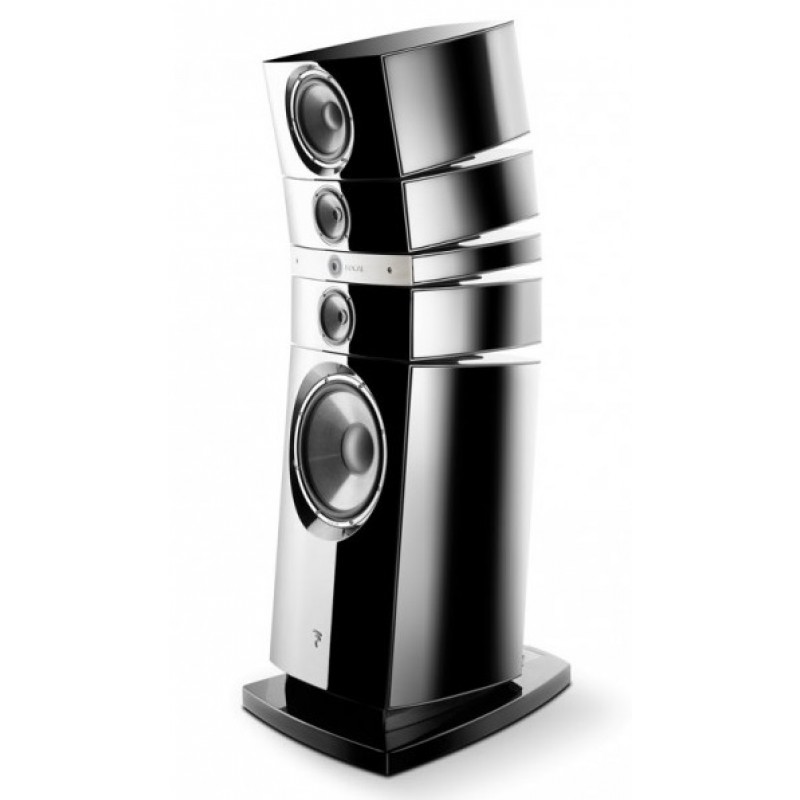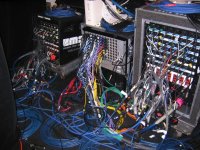I’d be inclined towards as few separate boxes and interconnections as possible for a mobile PA system.
Oh come on! You're taking the fun out of it!
Attachments
BWAHAHAHAHA!Oh come on! You're taking the fun out of it!
Hi mayem13,
Did you catch this thread: Infinite Line Source: analysis
Lots of useful pointers in there to figure out the route to go for a (relatively) short array.
Did you catch this thread: Infinite Line Source: analysis
Lots of useful pointers in there to figure out the route to go for a (relatively) short array.
Hi mayem13,
Did you catch this thread: Infinite Line Source: analysis
Lots of useful pointers in there to figure out the route to go for a (relatively) short array.
Thanks! I'll check it out now.
I don't think the F1 falls in to the line array category really, other than the fullrange drivers are in a vertical alignment, the sort length has no benefit of an infinite array......only greater power handling and lower distortion over a wider frequency band that can't be solved with today's drivers or in a compact system. BOSE I believe makes the best of the physical limitations involved.
There's some research, learning and discovery to be done here with current tech of beam steering and the like being used in pro sound applications which aren't true infinite lines either, just a larger scale of what BOSE is doing.
There's the extensive eQ think to flatten the response as combing takes its toll on the higher frequencies inducing significant rolloff....I believe this can be combated at the source using a driver with a naturally rising response. As to the overall effect of combing and group delay, i can't help but wonder if none of the drivers sharing the same vertical plane coordinates would help?.....or would the slight horizontal shift narrow the horizontal directivity? We're always some damm symmetrical when we design speaker systems......should we be? Anyone ever seen an array of drivers with curve?
There's some research, learning and discovery to be done here with current tech of beam steering and the like being used in pro sound applications which aren't true infinite lines either, just a larger scale of what BOSE is doing.
There's the extensive eQ think to flatten the response as combing takes its toll on the higher frequencies inducing significant rolloff....I believe this can be combated at the source using a driver with a naturally rising response. As to the overall effect of combing and group delay, i can't help but wonder if none of the drivers sharing the same vertical plane coordinates would help?.....or would the slight horizontal shift narrow the horizontal directivity? We're always some damm symmetrical when we design speaker systems......should we be? Anyone ever seen an array of drivers with curve?
Anyone ever seen an array of drivers with curve?

Focal and Bose in one thread.
Polar opposites.
Last edited:
The point of linking to the infinite line source thread wasn't to imply a Bose 'like' array falls into that infinite line source category. But there were pointers given for shorter arrays.
Personally for a short array I'd look into shading, for floor to ceiling arrays I wouldn't.
Aiming drivers was used in this (very similar) thread: Yet another DIY line array project
Not a focussed array or one bend the other way like the Keele CBT, but horizontal aiming within a straight array. Sadly the pictures have disappeared.
A row of drivers forming a line still is an array. Or in other words would still be called a (finite) line array.
Personally for a short array I'd look into shading, for floor to ceiling arrays I wouldn't.
Aiming drivers was used in this (very similar) thread: Yet another DIY line array project
Not a focussed array or one bend the other way like the Keele CBT, but horizontal aiming within a straight array. Sadly the pictures have disappeared.
A row of drivers forming a line still is an array. Or in other words would still be called a (finite) line array.
I think of BOSE as böse (bad, evil).BOSE (Buy Other Sound Equipment) uses cheap drivers and tons of processing to make up for it.
I don`t know if that's a good thing to pursue.
I think of BOSE as böse (bad, evil).
As long as it prevents you from buying that overpriced crap that`s ok I`d say.

Focal and Bose in one thread.
Polar opposites.
I was thinking more on the lines of a vertical line offset left or right or a little of both instead of focus or cbt style.
The point of linking to the infinite line source thread wasn't to imply a Bose 'like' array falls into that infinite line source category. But there were pointers given for shorter arrays.
Personally for a short array I'd look into shading, for floor to ceiling arrays I wouldn't.
Aiming drivers was used in this (very similar) thread: Yet another DIY line array project
Not a focussed array or one bend the other way like the Keele CBT, but horizontal aiming within a straight array. Sadly the pictures have disappeared.
A row of drivers forming a line still is an array. Or in other words would still be called a (finite) line array.
Understood, and with a line of drivers only 30" long I don't think I'm gonna see the advantages of an array in the textbook sense. I'm purely thinking of the 8 fullrange drivers as a cleaner, clearer and more wide range option than a compression driver and horn.
While I have no need or desire to emulate such a system, nor could I ever be accused of being a Bose apologist, I’ll repeat my earlier assertion that even with a design goal requiring far less dispersion flexibility than the F1 & sub combo, the modularity and integrated EQ/active amplification is key to its efficacy.
No matter the extent or choice of drivers selected, I’d keep that in mind. One or two signal cables from your source, and power cables for the on-board amps seems to me to be an elegant answer to the load in / out question.
No matter the extent or choice of drivers selected, I’d keep that in mind. One or two signal cables from your source, and power cables for the on-board amps seems to me to be an elegant answer to the load in / out question.
While I have no need or desire to emulate such a system, nor could I ever be accused of being a Bose apologist, I’ll repeat my earlier assertion that even with a design goal requiring far less dispersion flexibility than the F1 & sub combo, the modularity and integrated EQ/active amplification is key to its efficacy.
No matter the extent or choice of drivers selected, I’d keep that in mind. One or two signal cables from your source, and power cables for the on-board amps seems to me to be an elegant answer to the load in / out question.
That's the plan! My Mackie DR32 feeding a pair of Behringer iNukes with DSP or similar and some 18" subs. In ear monitors and a tactile drum throne get the job done.......and iPad of course! Lola
I've got one of these coming as well as a Faital, a TC9 and a Peerless
Dynavox LY302F 3-1/2" Full-Range Driver
the rising response above 10khz has me intrigued!
In this photo you get a much better view of the fullrange driver used......it convincingly looks like a peerless/tymphany oem driver of some sort. Paper cone and double roll surround. The TC10 looks similar but doesn't have the button cone cap.
F1 Model 812 take a look inside | Bose Pro Portable PA | Bose Pro
F1 Model 812 take a look inside | Bose Pro Portable PA | Bose Pro
In this photo you get a much better view of the fullrange driver used......it convincingly looks like a peerless/tymphany oem driver of some sort. Paper cone and double roll surround. The TC10 looks similar but doesn't have the button cone cap.
F1 Model 812 take a look inside | Bose Pro Portable PA | Bose Pro
So, basically, the "patented variable dispersion" system is to angle the last 2 drivers of the array, either top, bottom or both? Indeed no DSP needed for that.
Not too convinced about that system... angling the last couple of drivers will produce more lobbing over a wider dispersion range.
So, basically, the "patented variable dispersion" system is to angle the last 2 drivers of the array, either top, bottom or both? Indeed no DSP needed for that.
Not too convinced about that system... angling the last couple of drivers will produce more lobbing over a wider dispersion range.
Agreed! And since my intended use is single level venues with a low risers or stages, simply adjusting the height of the unit would give the best results AND reduce unwanted ceiling reflections. And that's exactly the configuration the F1 was in when I heard it at a local venue.
- Status
- This old topic is closed. If you want to reopen this topic, contact a moderator using the "Report Post" button.
- Home
- Loudspeakers
- Full Range
- Help me design a Bose F1 type system.
